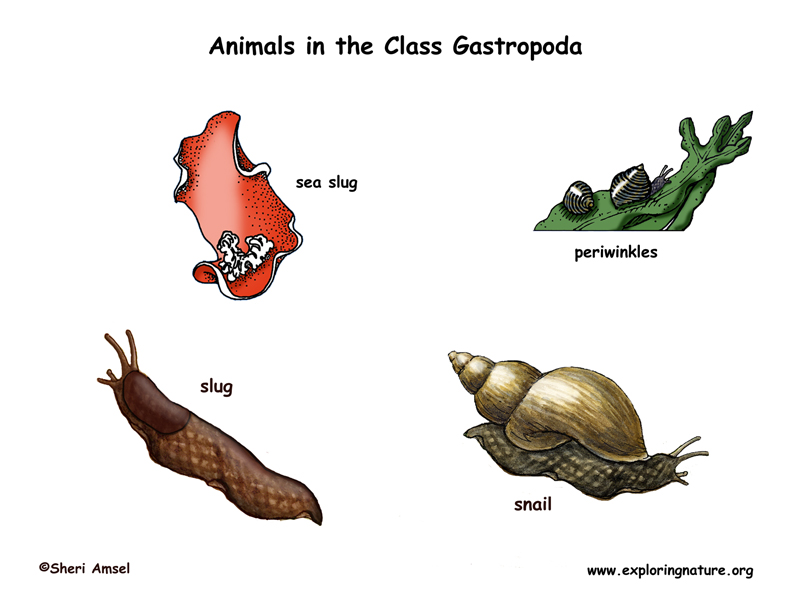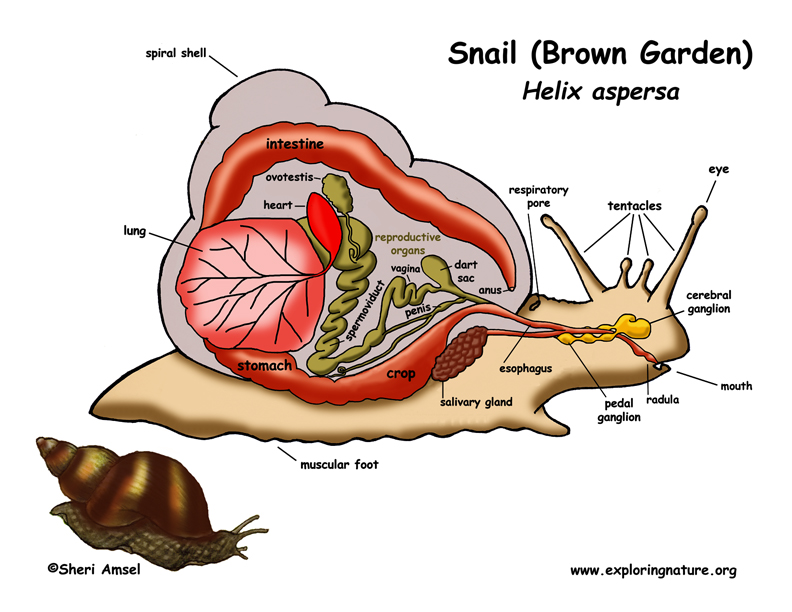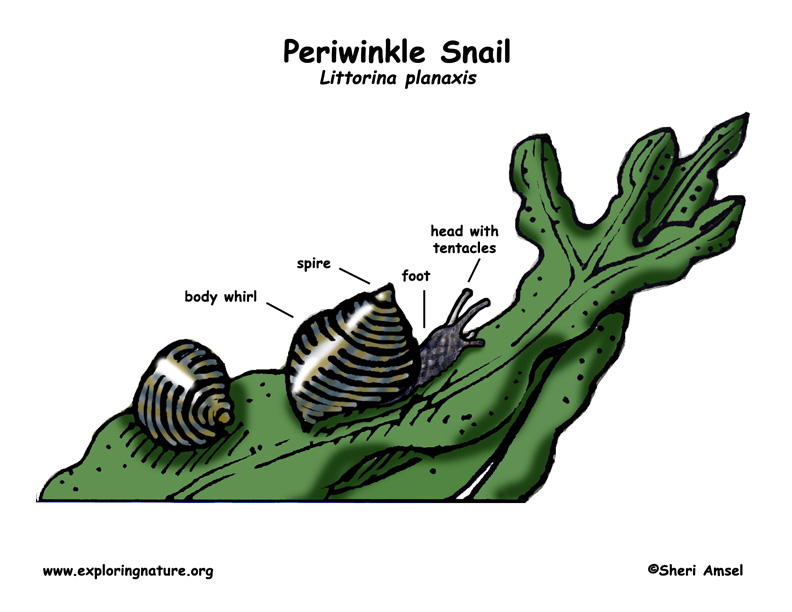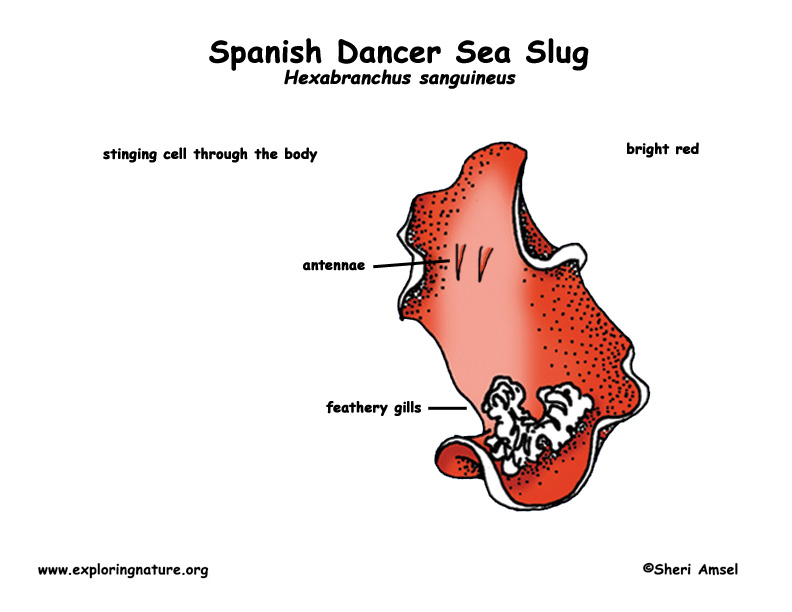

Animals > No Backbone (Invertebrate) > Slugs, Conchs, Periwinkles and Sea Slugs (Gastropoda)
Kingdom > Phylum > Class
Where They Live (Range and Habitat): Snails, Slugs, Conchs, Periwinkles and Sea Slugs live in water (aquatic habitats) and on land. They are found in both saltwater (marine) and freshwater habitats.
What Their Body is Like (Anatomy): Snails, Slugs, Conchs, Periwinkles and Sea Slugs have a large, muscular foot on which they move slowly. Their organs (visceral mass) sit on top of the foot.
• Snails, conchs, and periwinkles have shells. Slugs and the sea slugs do not have shells.
• Snails and slugs breathe through small openings (respiratory pores). The oxygen is then taken right into the blood of the body (mantle).
• Conchs, periwinkles and sea slugs live in the water and breathe through gills.
• Snails have a spiral shell and a tough plate, called an operculum, that can seal them inside in case of danger. They have a rough tongue (called a radula) with which they scrape away at food. They also have two pairs of tentacles, one pair has “eyes” at the end. Their anus is on their neck behind their head.
What They Eat (Diet): Some of this group eat plant matter (herbivores). They use their rough tongue (radula) to scrape off bits to eat. Others are carnivores and use their rough tongue (radula) to scrape into the shells of their prey.
To learn more about periwinkles: LINK
To learn more about snails: LINK
To color a snail: LINK
To color the parts of a snail: LINK
To label the parts of a snail: LINK
To color the conch: LINK
To learn more about sea slugs: LINK
To color a sea slug: LINK
When you research information you must cite the reference. Citing for websites is different from citing from books, magazines and periodicals. The style of citing shown here is from the MLA Style Citations (Modern Language Association).
When citing a WEBSITE the general format is as follows.
Author Last Name, First Name(s). "Title: Subtitle of Part of Web Page, if appropriate." Title: Subtitle: Section of Page if appropriate. Sponsoring/Publishing Agency, If Given. Additional significant descriptive information. Date of Electronic Publication or other Date, such as Last Updated. Day Month Year of access < URL >.
Amsel, Sheri. "Snails, Slugs, Conchs, Periwinkles and Sea Slugs (Gastropod Group)" Exploring Nature Educational Resource ©2005-2024. December 13, 2024
< http://exploringnature.org/db/view/Snails-Slugs-Conchs-Periwinkles-and-Sea-Slugs-Gastropod-Group >




